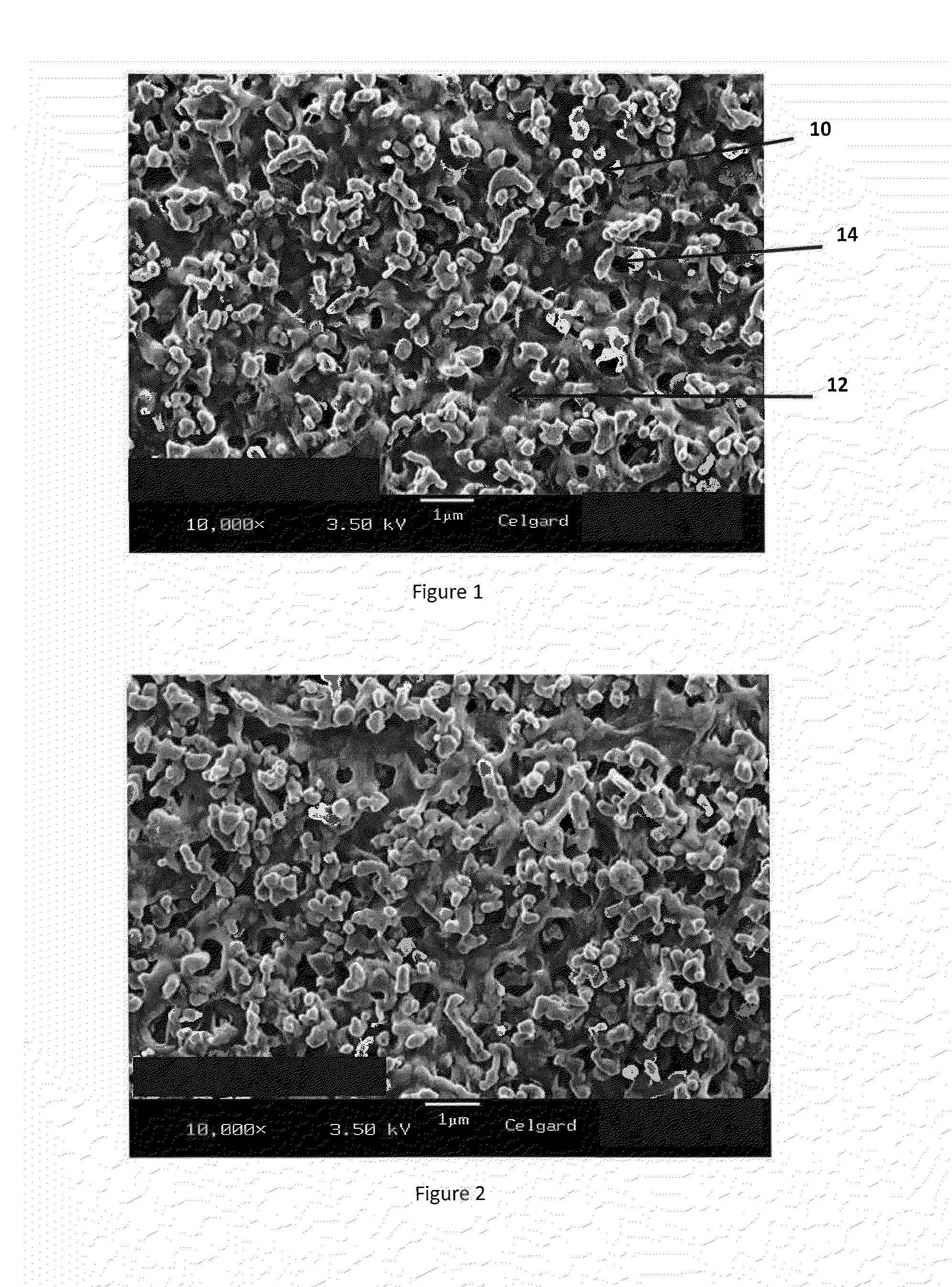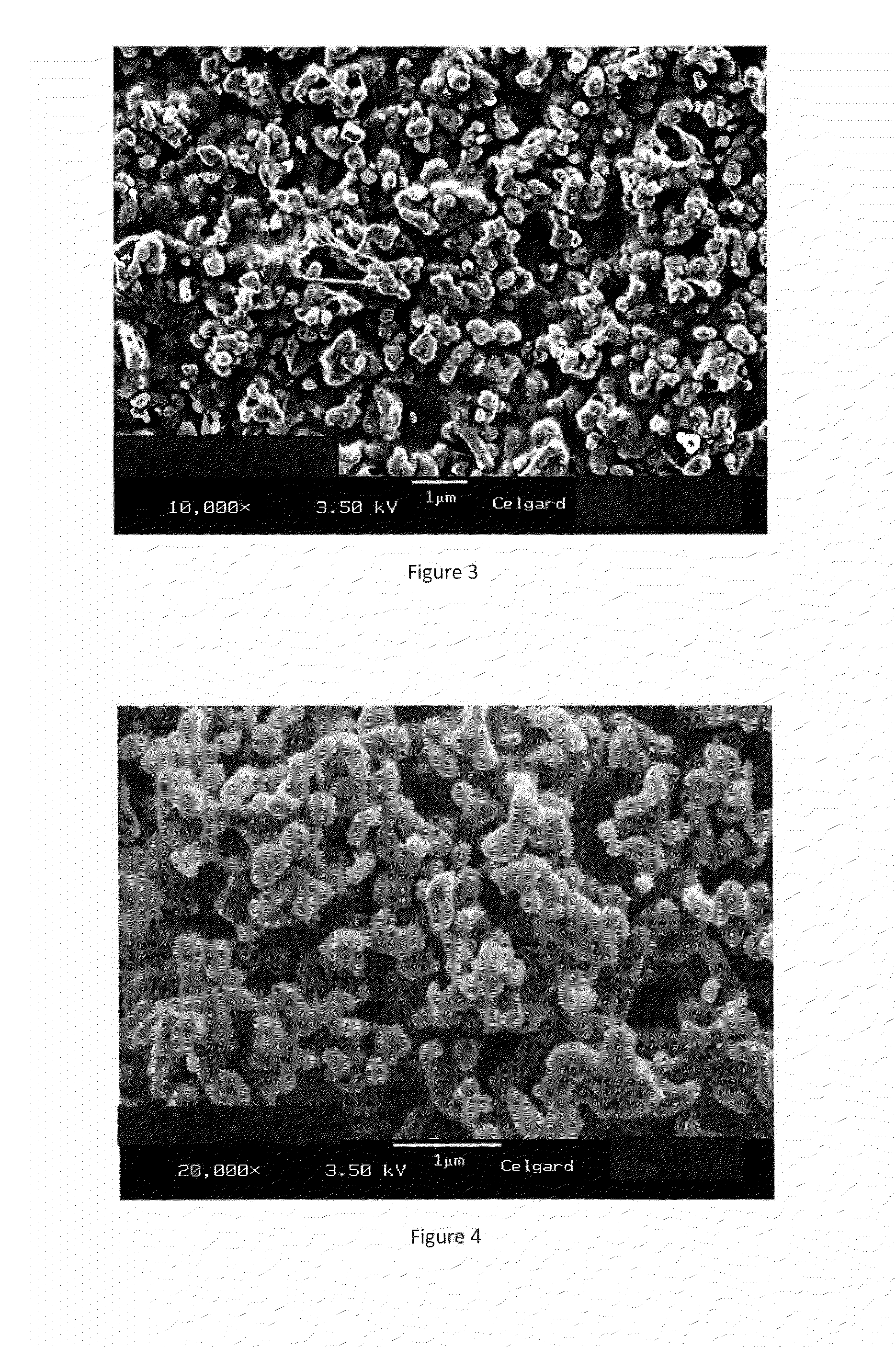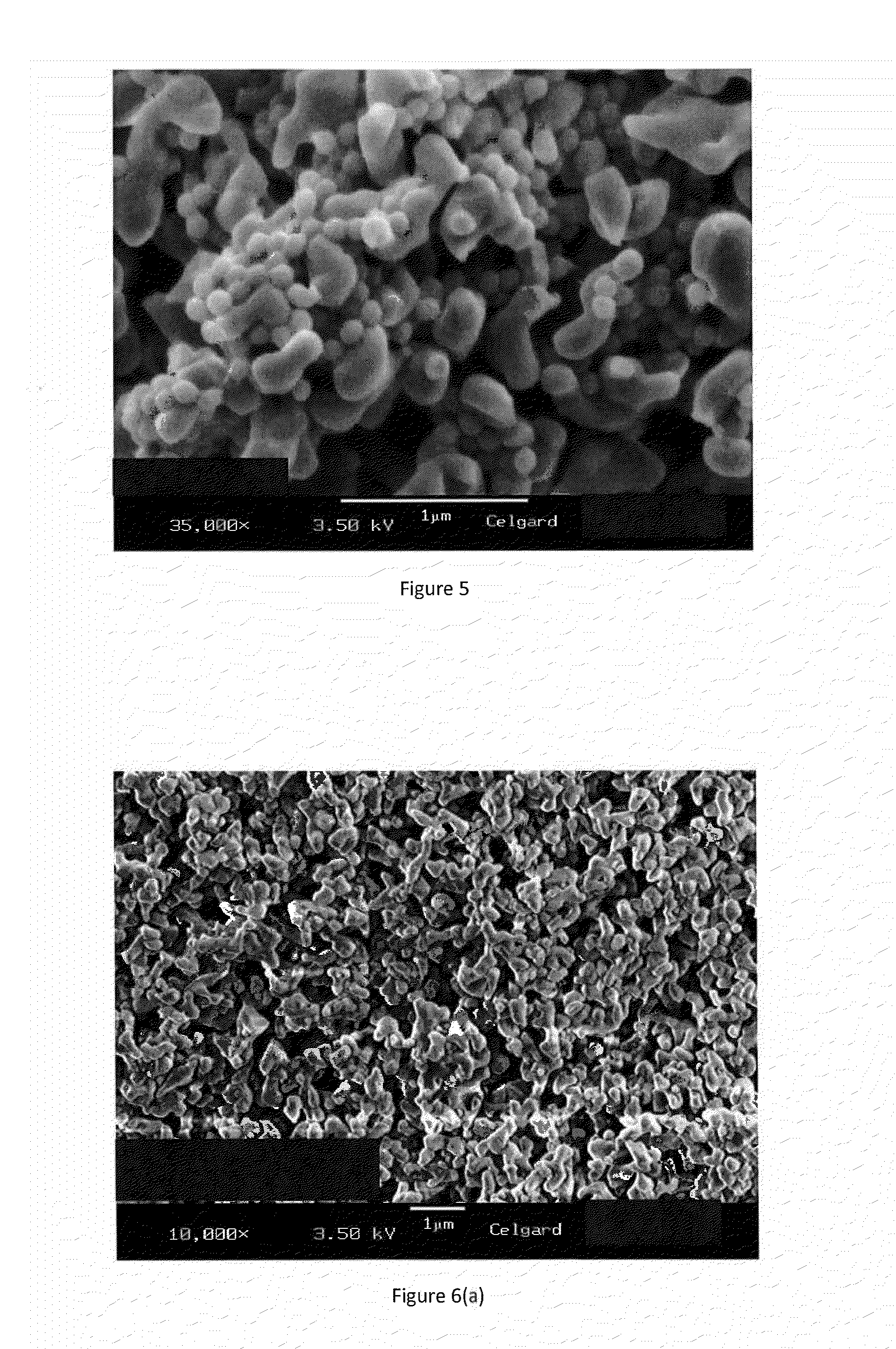Coated separators for lithium batteries and related methods
a technology of coated separators and lithium batteries, applied in the manufacture of final products, batteries, cell components, etc., can solve the problems of unwanted emissions, volatile non-aqueous solvents used to dissolve pvdf, and adverse effects on battery performance, etc., to achieve the effect of reducing shrinkage, improving thermal stability, and reducing porosity
- Summary
- Abstract
- Description
- Claims
- Application Information
AI Technical Summary
Benefits of technology
Problems solved by technology
Method used
Image
Examples
example 1
[0077]An aqueous-based PVDF / ceramic coating slurry was prepared by uniformly dispersing 25 grams of high purity alumina particles having a D50 average particle diameter of 0.65 μm, a bulk tapped density of 0.8 g / cm3 and a BET surface area of 4.6 m2 / g with 18.7 grams of Formulation #1, a 50:50 blend of Formulation #2 and Formulation #3, two aqueous solutions or suspensions of PVDF:HFP (available from Arkema Inc. of King of Prussia, Pa., under the product line Kynar® Latex) which differ by content of HFP and are described in more detail below. Improved mixing was achieved by first pre-wetting the alumina particles with the Formulation #1 solution or suspension. Dispersion was accomplished using a Silverson High Shear L4M-5 mixer at 5000 rpm for 12 minutes at room temperature. The slurry was applied to the surface of a Celgard®2400 PP microporous membrane (a membrane made by a dry process, also known as the Celgard® process and having a thickness of about 25 μm, a porosity of about 41%...
example 2
[0080]An aqueous-based PVDF / ceramic coating slurry was prepared by dispersing 39 grams of high purity alumina particles having a D50 average particle diameter of 0.65 μm, a bulk tapped density of 0.8 g / cm3 and a BET surface area of 4.6 m2 / g with 16.8 grams of the PVDF Formulation #1 blend described in Example 1 above. Improved mixing was achieved by first pre-wetting the alumina particles with the Formulation #1 solution or suspension. Dispersion was accomplished using a Silverson High Shear L4M-5 mixer at 5000 rpm for 12 minutes at room temperature and then using a Ball mill mixer (MTI Shimmy Ball Mixer) for 20 minutes. The ceramic / PVDF slurry was hand coated on a surface of a Celgard®2400 PP microporous membrane (the features of which membrane are described in Example 1 above) using a doctor blade, and the water was removed by oven drying at 79° C. An SEM of the surface of this coated separator membrane, taken at 10,000× magnification, is shown in FIG. 2. Components of the coating...
example 3
[0081]An aqueous-based PVDF / ceramic coating slurry was prepared by mixing and uniformly dispersing 66 grams of high purity alumina particles having a D50 average particle diameter of 0.65 μm, a bulk tapped density of 0.8 g / cm3 and a BET surface area of 4.6 m2 / g with 23.5 grams of Formulation #2, a Kynar® Latex product available from Arkema and generally described as an aqueous suspension of water (55-65%) and PVDF:HFP, which PVDF:HFP has a melt temperature in the range of about 114-120° C. Improved mixing was achieved by first pre-wetting the alumina particles with the Formulation #2 solution or suspension. Dispersion was accomplished using a Silverson High Shear L4M-5 mixer at 3000 rpm for 5 minutes at room temperature followed by mixing in Ball mill mixer (MTI Shimmy Ball Mixer) for 20 minutes. The slurry was hand coated onto the surface of a Celgard®EK0940 polyethylene microporous membrane (a membrane made from a wet process and having a thickness of about 9 μm, a porosity of abo...
PUM
| Property | Measurement | Unit |
|---|---|---|
| diameter | aaaaa | aaaaa |
| thickness | aaaaa | aaaaa |
| temperature | aaaaa | aaaaa |
Abstract
Description
Claims
Application Information
 Login to View More
Login to View More - R&D
- Intellectual Property
- Life Sciences
- Materials
- Tech Scout
- Unparalleled Data Quality
- Higher Quality Content
- 60% Fewer Hallucinations
Browse by: Latest US Patents, China's latest patents, Technical Efficacy Thesaurus, Application Domain, Technology Topic, Popular Technical Reports.
© 2025 PatSnap. All rights reserved.Legal|Privacy policy|Modern Slavery Act Transparency Statement|Sitemap|About US| Contact US: help@patsnap.com



